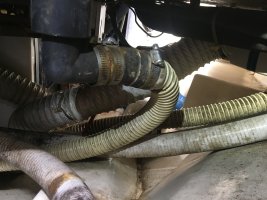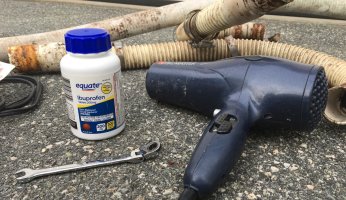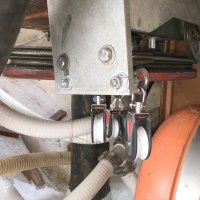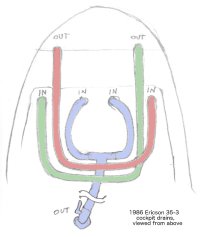Chschaus
"Voila"
Yes, not all that difficult, scraped off all the caulking I could then removed the screws. Cleaned everything up and laid a bead of silicone and screwed it back. I'll be removing it again this spring as I need to replace the forward bulkhead, I made a cardboard template but I think as soon as I start with wood I wont be able to get it in place so I'll go through the deck opening by removing the anchor locker.






